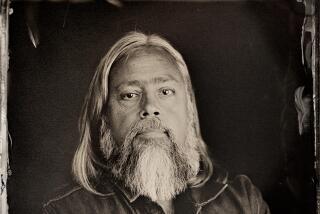Discoveries: ‘The Future History of the Arctic’ by Charles Emmerson
The Future History
of the Arctic
Charles Emmerson
PublicAffairs: 392 pp., $28.95
“In the mind of a ten-year-old almost any line on a map is worth crossing for the sake of it.” Charles Emmerson turned his childhood fascination with “our half-imagined Arctic” into a life’s work. In “The Future History of the Arctic,” Emmerson explains the forces that have shaped the history of the Arctic and will shape its future. He never loses his childhood sense of wonder at the land above 66 degrees 33’ 39” north; the Arctic remains for him an idea that cannot be mapped. As a child, however, he believed in its resilience; as an adult, he understands its vulnerability. The book comes full of characters -- explorers, politicians, shipping magnates, artists, scientists -- as well as with a rich vein of marginalia (reading lists and odd facts about the north). Their dreams of the Arctic give the book an archival feel. A kind of calving, as happens to icebergs, goes on throughout this fascinating book; something you thought would always be there falls away in great, dumb, resounding chunks: “Our ideas of the Arctic -- permanent, pristine, unchanging -- will persist long after they have been overtaken by Arctic change. But slowly, bit by bit, our ideas of the Arctic will have to adapt. As they do, a little bit of our sense of earthly eternity will be lost forever.”
Ghosts of Wyoming
Stories
Alyson Hagy
Graywolf: 172 pp., $15 paper
These eight burnished stories confirm Alison Hagy’s importance in American literature; her seamless blending of landscape and lives, her very modern understanding of the vulnerability of kindness. It is of course terrifying to think that a life can be reduced to metaphor, as in her story “Brief Lives of the Trainmen”: “He tucks his belongings under one arm and shimmies open the boxcar door. The morning smells of mule and tar. The surveyors’ tents, set like a widow woman’s teacups on the flat plain to the south, are barely visible against the chalky soil he can taste when the wind blows his way.” But Hagy doesn’t so much reduce as pare away the back story, the ancestry, the potential to reveal a moment to which a character brings everything. In “The Border,” for example, the boy who steals a dog is so much more: a human running from cruelty, whose life is continually “sent backward.” Metaphor works so well in the western landscape -- all that space where it can run itself out. In the East, it can seem jarring as metaphors ricochet off a more cluttered, suburban stage set. Hagy’s writing is stylized but still rings true. Echoes, in fact.
Salter Reynolds is a writer in Los Angeles.
More to Read
The biggest entertainment stories
Get our big stories about Hollywood, film, television, music, arts, culture and more right in your inbox as soon as they publish.
You may occasionally receive promotional content from the Los Angeles Times.










